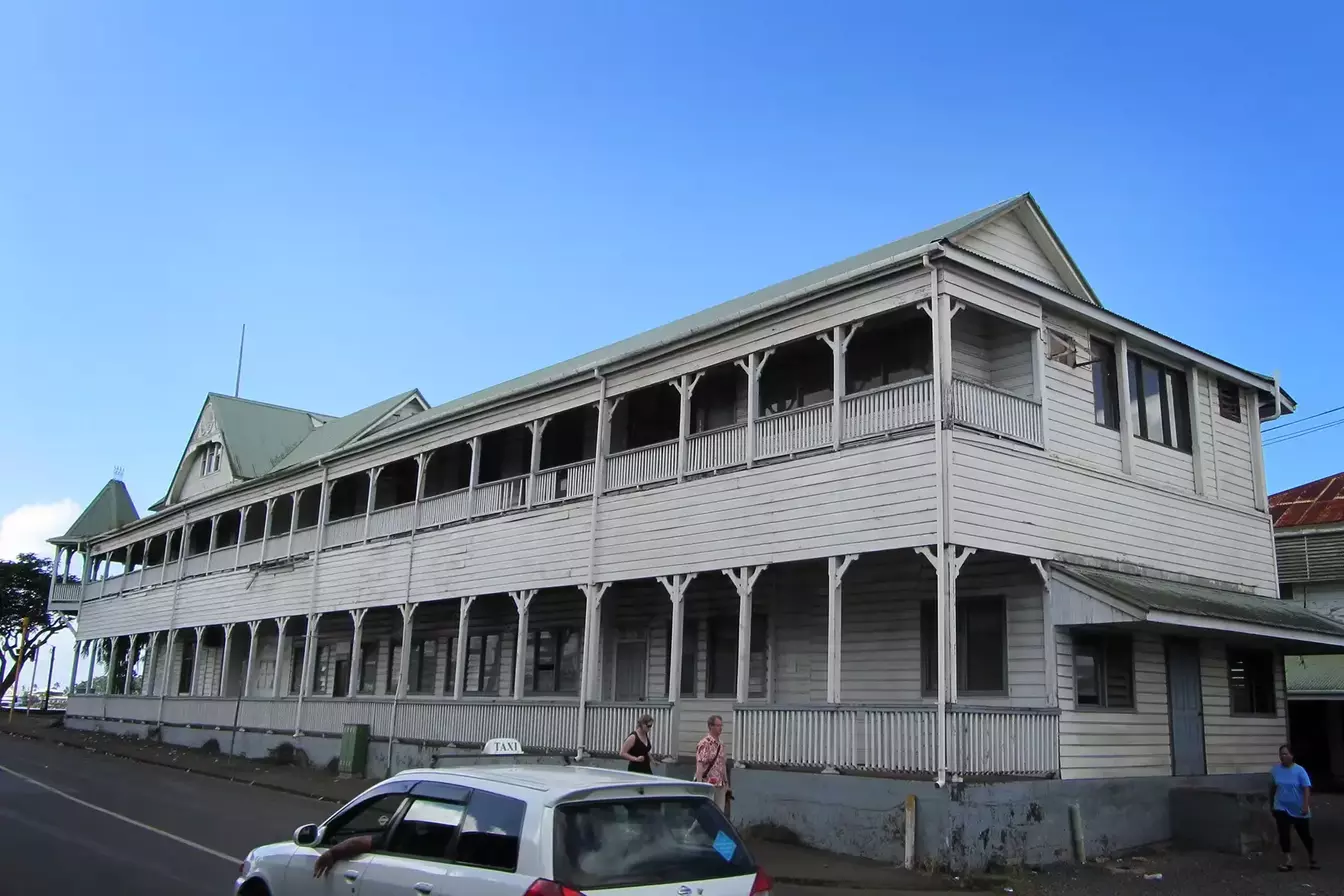
Old Apia Courthouse
Overall Rating: ⭐⭐⭐⭐☆ (4/5)
Rating Breakdown:
✔ Historical Significance – ⭐⭐⭐⭐☆ (4/5)
✔ Cultural Impact – ⭐⭐⭐⭐⭐ (5/5)
✔ Atmosphere & Maintenance – ⭐⭐⭐⭐☆ (4/5)
✔ Accessibility – ⭐⭐⭐⭐☆ (4/5)
✔ Tourist-Friendly – ⭐⭐⭐⭐☆ (4/5)
Weather
- Tropical climate with high humidity; expect warm temperatures year-round with occasional rain.
Tags
- Colonial Architecture, Historic Site, Museum
Timings
- Monday to Friday: 9:00 AM – 5:00 PM
Closed on weekends and public holidays
Time Required
- 1 to 1.5 hours
Entry Fee
- Free entry (donations encouraged for maintenance)
Things to See & Do
- Exhibition Halls – View cultural and historical displays related to Samoa’s past.
- Architectural Tour – Admire one of the finest examples of colonial architecture in the Pacific.
- Photography – Capture the building's historic façade and tropical surroundings.
- Local Events – Occasionally hosts cultural events, workshops, or government ceremonies.
Best Time to Visit
- Morning or Early Afternoon for cooler temperatures and fewer crowds.
- Dry Season (May to October) is ideal for visiting to avoid heavy rainfall.
Nearest Parking Spots
- Limited street parking available nearby.
- Best accessed on foot from central Apia or by taxi.
Overview
- Colonial Heritage – The Old Apia Courthouse stands as one of Samoa’s most prominent colonial-era buildings, built in the 1900s during German administration.
- Judicial Landmark – It once served as the central government building and court, playing a crucial role in Samoan governance during colonial times.
- Restored Museum Space – Now repurposed, the courthouse houses rotating exhibits that highlight Samoan culture, history, and art.
- Iconic Structure – Its grand veranda, weathered timber walls, and central tower make it a photogenic and historically rich destination.
- Cultural Preservation – The site is a symbol of both colonial legacy and Samoan resilience in preserving its history.
- Clock Tower – A central feature of the building’s design, adding a distinctive colonial charm.
- Old Courtroom – Preserved with original woodwork and furniture, offering a glimpse into the judicial past.
- Colonial Verandas – Wrap-around balconies that provide shade and scenic views.
- Museum Exhibits – Includes photographs, documents, and items related to Samoa’s colonial and post-independence history.
- Constructed in the early 20th century, the courthouse served as the administrative hub during both German and New Zealand rule.
- It housed not only the judicial court but also several key government offices, making it central to the political life of Apia.
- After Samoa’s independence in 1962, the building gradually shifted away from official use and fell into disrepair before being restored.
- Efforts to preserve the courthouse began in the early 2000s, transforming it into a heritage center that reflects Samoa’s layered history.
- Today, it serves as a powerful visual reminder of Samoa’s colonial past and its journey toward sovereignty.
- The building reflects German colonial design with Pacific adaptations, featuring wide verandas, steep gabled roofs, and timber detailing.
- Whitewashed exterior walls, wooden shutters, and ornate carvings add to its visual appeal and historic character.
- The central tower and symmetrical layout emphasize the European influence on Samoan infrastructure during the early 1900s.
- Interior elements such as wooden flooring, high ceilings, and open-air design provide ventilation and tropical comfort.
- Despite its age, restoration efforts have maintained the courthouse’s original charm while modernizing parts of the interior for public access.
- Visit on Weekdays – The site is closed on weekends, so plan your visit Monday to Friday.
- Check for Events – Occasionally, the courthouse hosts cultural exhibitions or art displays worth seeing.
- Bring a Camera – The architecture and interior make for excellent photography.
- Dress Lightly – It can be hot and humid, so wear breathable clothing.
- Respect the Space – Though it’s a public attraction, the building remains a historical site.
- Location – Situated in the heart of Apia, on Beach Road near the harborfront.
- By Taxi – Taxis are easily available and inexpensive in Apia.
- By Foot – Just a short walk from most central Apia accommodations.
- Public Transport – Local buses do pass nearby, but taxis or walking are more efficient.
- Parking Availability – Limited, so avoid peak hours or arrive early for a spot.